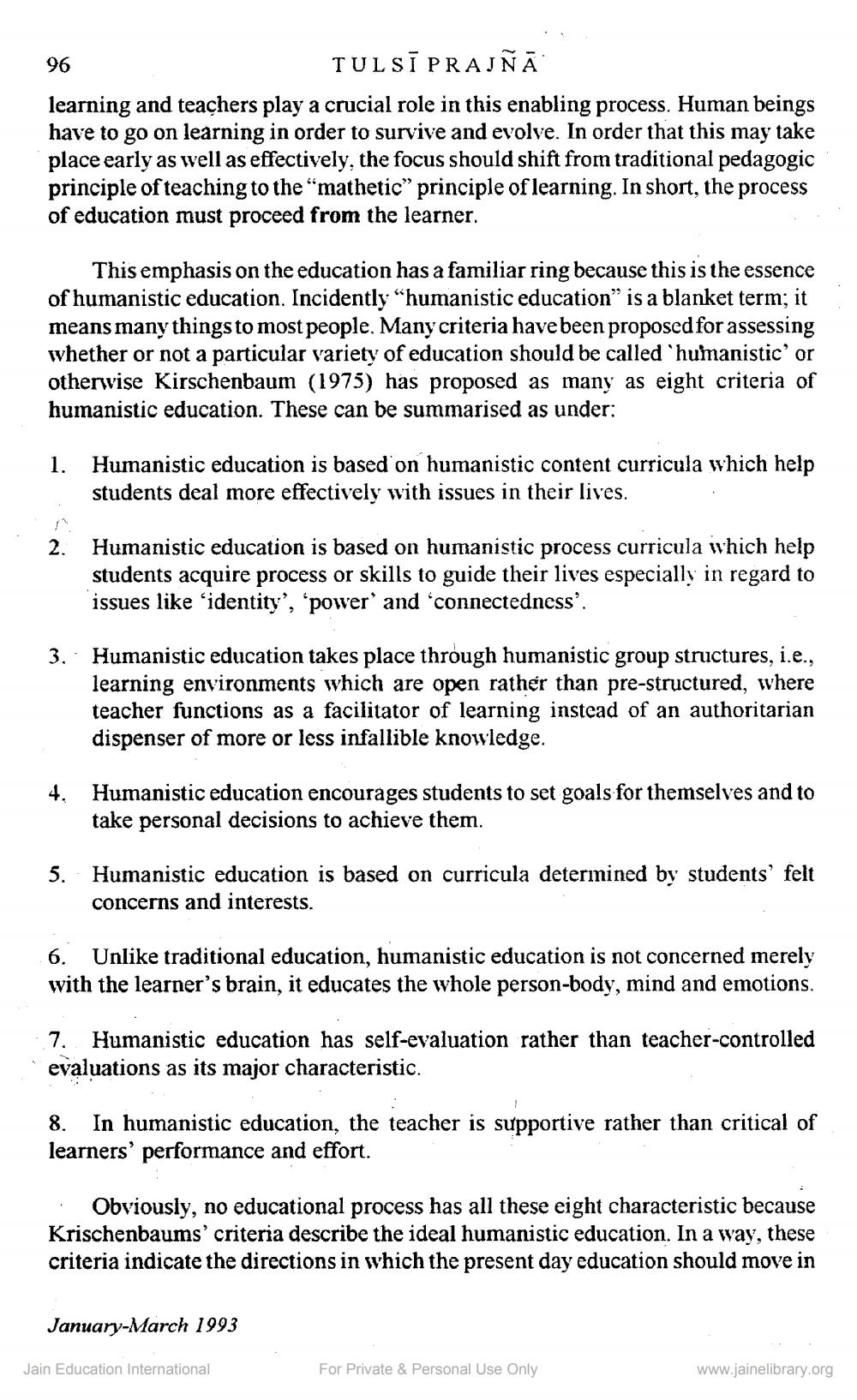________________
96
TU L SĨ PRAI NA learning and teachers play a crucial role in this enabling process. Human beings have to go on learning in order to survive and evolve. In order that this may take place early as well as effectively, the focus should shift from traditional pedagogic principle of teaching to the “mathetic" principle of learning. In short, the process of education must proceed from the learner.
This emphasis on the education has a familiar ring because this is the essence of humanistic education. Incidently "humanistic education is a
incidently "humanistic education” is a blanket term: it means many things to most people. Many criteria havebeen proposed for assessing whether or not a particular variety of education should be called 'humanistic' or otherwise Kirschenbaum (1975) has proposed as many as eight criteria of humanistic education. These can be summarised as under:
1. Humanistic education is based on humanistic content curricula which help
students deal more effectively with issues in their lives.
2. Humanistic education is based on humanistic process curricula which help
students acquire process or skills to guide their lives especially in regard to issues like 'identity, power' and 'connectedness'.
3. Humanistic education takes place through humanistic group structures, i.e.,
learning environments which are open rather than pre-structured, where teacher functions as a facilitator of learning instead of an authoritarian dispenser of more or less infallible knowledge.
4. Humanistic education encourages students to set goals for themselves and to
take personal decisions to achieve them.
5. - Humanistic education is based on curricula determined by students' felt
concerns and interests.
6. Unlike traditional education, humanistic education is not concerned merely with the learner's brain, it educates the whole person-body, mind and emotions.
7. Humanistic education has self-evaluation rather than teacher-controlled evaluations as its major characteristic.
8. In humanistic education, the teacher is supportive rather than critical of learners' performance and effort.
. Obviously, no educational process has all these eight characteristic because Krischenbaums' criteria describe the ideal humanistic education. In a way, these criteria indicate the directions in which the present day education should move in
January March 1993
Jain Education International
For Private & Personal Use Only
www.jainelibrary.org




